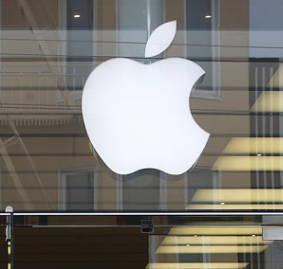For many years, China was virtually a closed market for Western companies, but in the days of the global village, all that has changed. The opening up of the Chinese market for outside players doesn't just create a new market opportunity - it creates the world's largest market opportunity. And while China once had a reputation for being a "Shanzhai" - or copycat - nation, that has all changed. China is now seen as an innovator and where China goes, the West follows.
The importance of the Chinese market (and its 520 million smartphones) to technology companies' global ambitions was underlined last week when Apple revealed an impressive set of financial results. Sales of Apple products were up 70 per cent in China, and that can be attributed to the iPhone 6. The larger screen clearly was what the Eastern market demanded. Shaun Rein, managing director of China Market Research Group suggests bigger smartphone screens are popular in China because of the high propensity of consumers who use their phone as a media player. While the iPhone 6 has hardly been a flop in the west - quite the opposite - its size has turned off some people. I can't help but smile at this promo for the 'common sense' size of the iPhone 5 in the wake of the new larger screen iPhone.
But I see the logic now. The Chinese mobile market is fast becoming the biggest and most profitable, so of course Apple's latest product should be designed with that market in mind. Furthermore, China is not simply the largest market for hardware sales of smartphones; it also has more potential than anywhere else in the world for mobile commerce, banking and other advanced solutions. Both rural and urban consumers demonstrate a willingness to use their phone beyond simple communication tasks, and it's not surprising when you take into consideration that the majority of connections to the internet are made on a smartphone throughout the country.
In rural China, mobile commerce and banking on low cost Android phones is really taking off. We've seen the same kind of growth in India and other countries lacking traditional banking infrastructure in rural communities: Mobile has the ability to deliver banking for the previously un-banked. And eCommerce payments made directly on-device have soared, which has benefited companies like Alibaba massively.
In urban areas and city centres, mobile payments in-store have not yet exploded, much like they haven't reached that tipping point in other markets either. It's coming though. If I was a betting man, I'd place my money on China being the country where in-store mobile payments really take off first. That belief is strengthened by the fact that use of QR code, for example, is far more mainstream in the Chinese market than it is currently in Europe or the US. In fact, so popular are QR codes for payments that they have received a temporary ban in China, while regulation is finalised to cope with the implications of the technology. Nevertheless many people still utilise them despite the ban, and with the strong indications of its imminent lifting, others are preparing.
All of this makes China such an exciting market for those providing mobile solutions. It's undoubtedly already a market leader for mobile payments online, with in-store payments likely to be not far behind. China is a market with few barriers to widespread adoption of mobile payments; the consumer acceptance is there and the regulators are keen to encourage. Solutions like Onescan - which use secure, encrypted QR code technology, combine identity and payment solutions, and work across many different handsets and infrastructure platforms, both in-store and online - are ideally placed to take advantage of that growth and the 520 million smartphones and counting.
By Matthew Taylor 2nd February 2015
Related stories around the web
What's so different about China's mobile payments' ecosystem? - PYMNTS


